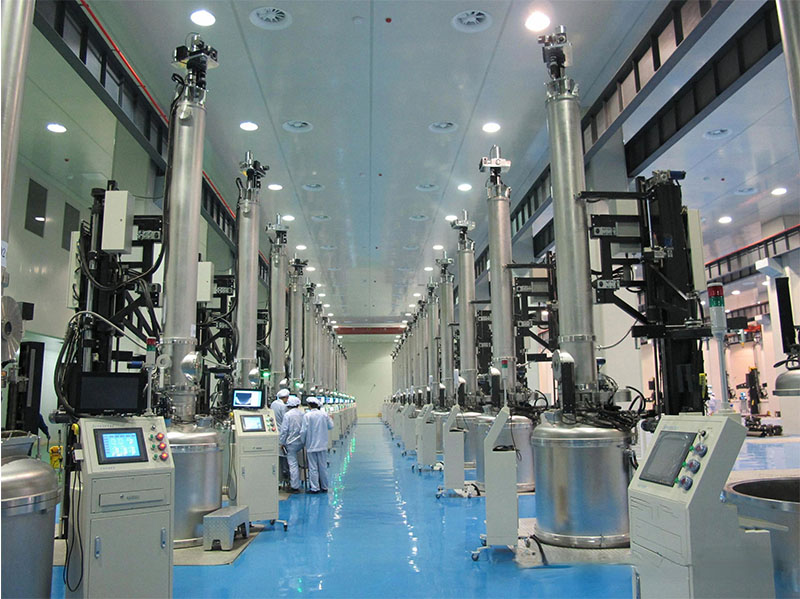The crystal growth furnace is the core equipment for silicon carbide crystal growth. It is similar to the traditional crystalline silicon grade crystal growth furnace. The furnace structure is not very complicated. It is mainly composed of furnace body, heating system, coil transmission mechanism, vacuum acquisition and measurement system, gas path system, cooling system, control system, etc. The thermal field and process conditions determine the key indicators of silicon carbide crystal like quality, size, conductivity and so on.
On the one hand, the temperature during the growth of silicon carbide crystal is very high and cannot be monitored. Therefore, the main difficulty lies in the process itself. The main difficulties are as follows:
(1) Difficulty in thermal field control:
The monitoring of the closed high-temperature cavity is difficult and uncontrollable. Different from the traditional silicon-based solution direct-pull crystal growth equipment with a high degree of automation and observable and controllable crystal growth process, silicon carbide crystals grow in a closed space in a high-temperature environment above 2,000℃, and the growth temperature needs to be precisely controlled during production, which makes temperature control difficult;
(2) Difficulty in crystal form control:
Micropipes, polymorphic inclusions, dislocations and other defects are prone to occur during the growth process, and they affect and evolve each other. Micropipes (MP) are through-type defects with a size of several microns to tens of microns, which are killer defects of devices. Silicon carbide single crystals include more than 200 different crystal forms, but only a few crystal structures (4H type) are the semiconductor materials required for production. Crystal form transformation is easy to occur during the growth process, resulting in polymorphic inclusion defects. Therefore, it is necessary to accurately control parameters such as silicon-carbon ratio, growth temperature gradient, crystal growth rate, and air flow pressure. In addition, there is a temperature gradient in the thermal field of silicon carbide single crystal growth, which leads to native internal stress and the resulting dislocations (basal plane dislocation BPD, screw dislocation TSD, edge dislocation TED) during the crystal growth process, thereby affecting the quality and performance of subsequent epitaxy and devices.
(3) Difficult doping control:
The introduction of external impurities must be strictly controlled to obtain a conductive crystal with directional doping;
(4) Slow growth rate:
The growth rate of silicon carbide is very slow. Traditional silicon materials only need 3 days to grow into a crystal rod, while silicon carbide crystal rods need 7 days. This leads to a naturally lower production efficiency of silicon carbide and very limited output.
On the other hand, the parameters of silicon carbide epitaxial growth are extremely demanding, including the air-tightness of the equipment, the stability of the gas pressure in the reaction chamber, the precise control of the gas introduction time, the accuracy of the gas ratio, and the strict management of the deposition temperature. In particular, with the improvement of the device’s voltage resistance level, the difficulty of controlling the core parameters of the epitaxial wafer has increased significantly. In addition, with the increase in the thickness of the epitaxial layer, how to control the uniformity of the resistivity and reduce the defect density while ensuring the thickness has become another major challenge. In the electrified control system, it is necessary to integrate high-precision sensors and actuators to ensure that various parameters can be accurately and stably regulated. At the same time, the optimization of the control algorithm is also crucial. It needs to be able to adjust the control strategy in real time according to the feedback signal to adapt to various changes in the silicon carbide epitaxial growth process.
Main difficulties in silicon carbide substrate manufacturing:
Post time: Jun-07-2024


